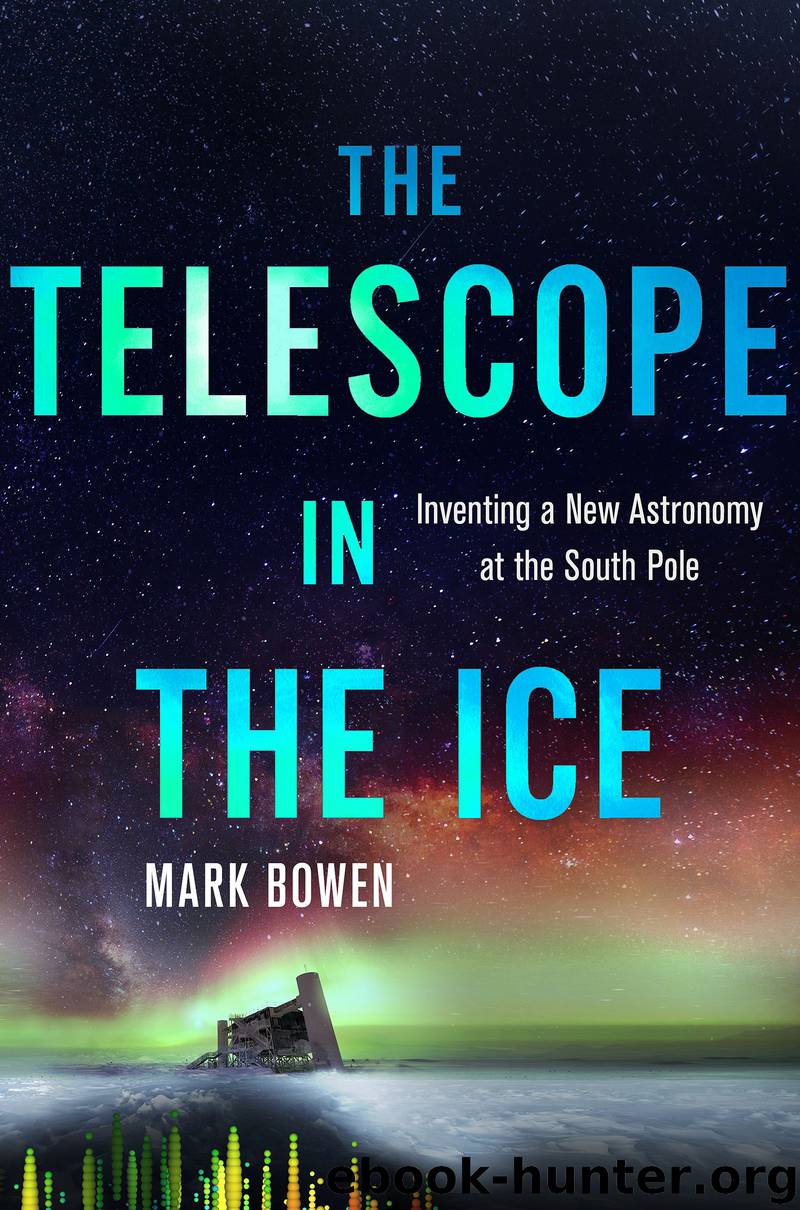The Telescope in the Ice by Mark Bowen

Author:Mark Bowen
Language: eng
Format: epub
Publisher: St. Martin's Press
14. The First Nus†
Back in the real world, rumors were circulating that the AMANDA collaboration wasn’t capable of picking up-going events out of their down-going haystack or, worse, that the instrument was too unstable to detect anything at all. By the time Gary and Robert left the Ice, the collaboration had supposedly possessed a working instrument for about a year, AMANDA-B4, but had no physics to show for it. Francis was becoming increasingly anxious to produce results—and privately harboring his own doubts as well.
They had a good excuse, since even they couldn’t see their data for about a year after any new version of the instrument was deployed. John Jacobsen hadn’t written his polechomper program yet, so there was no way to send data north in winter. The winterovers stored it on tapes at Pole, so it didn’t become available until the austral spring when someone found a chance to carry the tapes north.
Again, research is when you don’t know what you’re doing. They had only a vague idea of how they were going to grapple with this inchoate mass of information. Since they didn’t know exactly what an up-going muon was going to look like in their instrument and didn’t want to miss any, they programmed it to cast as wide a net as possible as they squeezed the raw data down to a manageable size and saved them. The computers in MAPO stored “events” based on a loose set of criteria set by various “triggers,” the most basic of which saved an event whenever a certain number of phototubes—eight or ten—lit up within a certain, short period of time. There were also coincidence triggers set up with SPASE, the air shower array on the surface, and AMANDA-A, up in the bubbles, in order to “veto” events that occurred during down-going muon air showers detected by those instruments.
The first, large and loose dataset would need to be calibrated, using the data from the laser flashers that Steve Barwick obtained every February—always in a panic as they prepared to leave the Ice at the end of summer—and the calibrated data would need to be purged of obvious noise “hits.” The next step would be to filter out the air shower and obvious down-going events, leaving an enriched and significantly smaller dataset, which would be put through a sequence of more intelligent “cuts” in order to find muon tracks, reconstruct their direction, and pick the up-going events, signifying candidate neutrinos, out of the pile. The prospects were daunting, not least because the physicists knew in advance that down-going muons would outnumber the up-going by a factor of about a million.
John Jacobsen seems to have been the first to try to put the whole ball of wax together, sometime in 1995, before AMANDA-B4 was even deployed. Although he didn’t get far, the effort put him right on top of things when B4 began taking data on February 19, 1996. He asked someone to carry one day’s data north by hand at the
Download
This site does not store any files on its server. We only index and link to content provided by other sites. Please contact the content providers to delete copyright contents if any and email us, we'll remove relevant links or contents immediately.
Tools of Titans by Timothy Ferriss(7815)
Turbulence by E. J. Noyes(7702)
Astrophysics for People in a Hurry by Neil DeGrasse Tyson(5002)
Secrets of Antigravity Propulsion: Tesla, UFOs, and Classified Aerospace Technology by Ph.D. Paul A. Laviolette(4994)
Design of Trajectory Optimization Approach for Space Maneuver Vehicle Skip Entry Problems by Runqi Chai & Al Savvaris & Antonios Tsourdos & Senchun Chai(4843)
Room 212 by Kate Stewart(4739)
Pale Blue Dot by Carl Sagan(4618)
The David Icke Guide to the Global Conspiracy (and how to end it) by David Icke(4381)
A Journey Through Divination and Astronomy by Publishing Pottermore(4250)
Apollo 8 by Jeffrey Kluger(3512)
Goodbye Paradise(3446)
Losing the Nobel Prize by Brian Keating(3425)
COSMOS by Carl Sagan(3348)
The Five People You Meet in Heaven by Mitch Albom(3335)
How to Read Water: Clues and Patterns from Puddles to the Sea (Natural Navigation) by Tristan Gooley(3240)
Brief Answers to the Big Questions by Stephen Hawking(3239)
How to Read Nature by Tristan Gooley(3079)
The Order of Time by Carlo Rovelli(3073)
A Brief History of Time by Stephen Hawking(2819)
